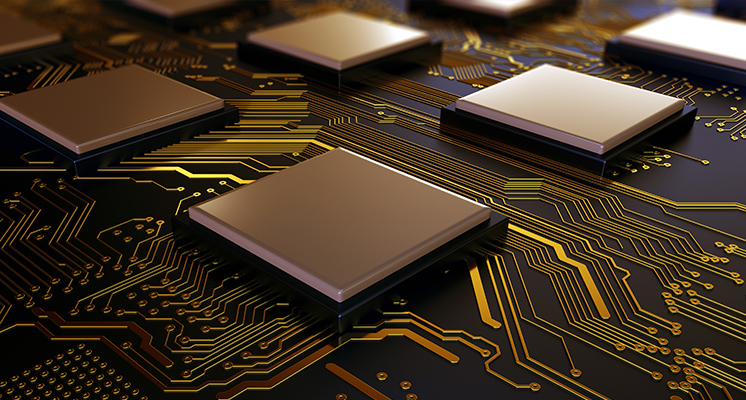What are FPGA and ASIC? Where is it used?
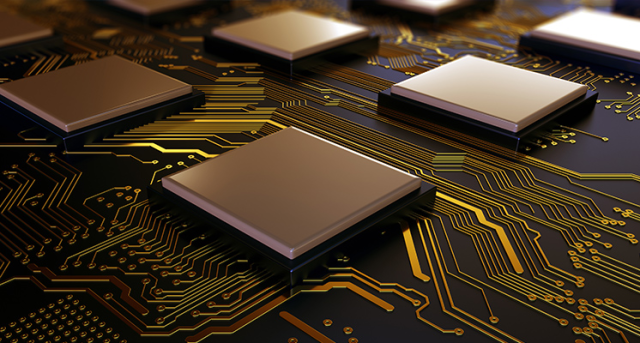
When talking about technological devices, processor types such as CPU, GPU and SoC are generally mentioned in the hardware scene. However, there are also hardware solutions used in very different applications that most people in the industry have not heard of: for example, FPGA (Field-Programmable Gate Arrays) and ASIC (Application-Specific In integrated circuits ) like.
ASIC and FPGA are just two of the microchip types that can be preferred when designing electronic products. To put it another way, they are two types of semiconductor devices that serve different purposes in the world of electronics. ASICs are specifically designed for specific applications and offer high performance and efficiency. We can define FPGAs as reprogrammable integrated circuits that provide flexibility and rapid prototyping capabilities.
The choice between the two depends on various factors such as performance requirements, power consumption, cost, design flexibility and time to market. Now we will talk about the details of chip types as ASIC and FPGA, and also look at their advantages and disadvantages. In fact, both of them are issues that end consumers are far from. By understanding the key differences between these options, engineers and designers can make informed decisions that fit project needs and constraints.
CPU, FPGA and ASIC
CPU and ASIC (application-specific integrated circuits) are opposite poles of the computing spectrum. As the name suggests, ASICs are hard-wired silicones and are used to run certain algorithms. These are the fastest and most efficient chips possible because they do only one purpose-built job. As a result, they do not have the flexibility to run other algorithms. CPUs, on the other hand, can be freely programmed to run any software.
FPGAs lie in between the two extremes. These integrated circuits essentially consist of millions of logic elements (LE) or gate arrays. The last part of the FPGA name is already related to this. A logical component is simply a lookup table (also known as a LUT or truth table) that stores the output for all possible combinations of inputs. For example, a 2-bit LUT might have four different inputs: 00, 01, 10, and 11. The lookup table then shows how a boolean function evaluates (true or false) for each of these possible inputs. as job). Simply put, FPGAs look for the answer rather than receiving, decoding, and executing instructions as a general-purpose CPU does.
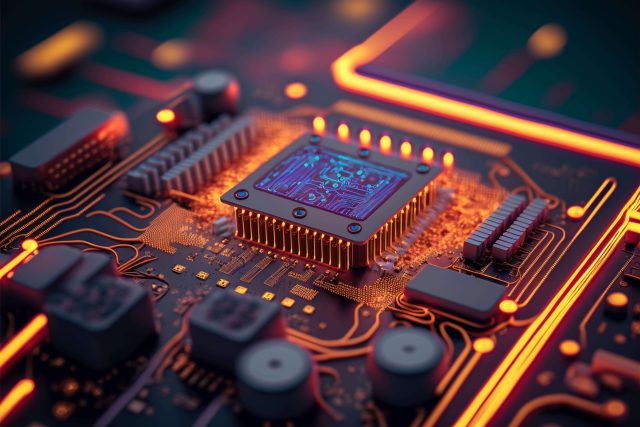
Logic units called FPGAs (aka gate arrays) are designed to be reconfigurable at any time (i.e. field-programmable). This is where the words “field (or field) programmable” come from. So what does it mean? Algorithms can be updated or the FPGA can be quickly redesigned for completely different applications. The programming opportunity provided also significantly shortens the time to market compared to a wired ASIC.
In summary, FPGAs are fast and efficient because they can be optimized and programmed for algorithms. High-end FPGAs contain millions of the logic elements mentioned above.
What is FPGA?
Now let’s discuss the chip design styles separately. A field-programmable gate array (FPGA) is a type of integrated circuit designed to be configured by a customer or designer after production.
Picture electrical circuits connecting resistors, capacitors, transistors, and other components via copper pathways. Well, what if you want to change the connection between the components after producing the circuit and assembling the PCB? This won’t be very easy unless you are producing newer PCBs. A 10-layer or more complex PCB requires time, effort, cost, and more. Therefore, it is necessary to make sure that it works in a single try.
CPU, GPU and various microcontrollers are actually nothing but integrated circuits, but they are on the nanometer scale. The chips have billions of MOSFETs or transistors connected together with very small wires, and there are billions of gate connections. As a result, manufacturing a chip requires a huge amount of resources and time. R&D, tests, prototype stages, production process and more. In addition to millions of dollars of investment, there are processes that take months or maybe years.
On the software side, things are easier. When a new version is released for iOS, Android or Windows operating systems, some problems may occur. Companies can make bug fixes and updates within a few days. However, in the case of an ASIC (CPU, GPU, AI chips), you cannot change the connection of even a single one of the billions of transistors once they are manufactured. At this point FPGA Activated.
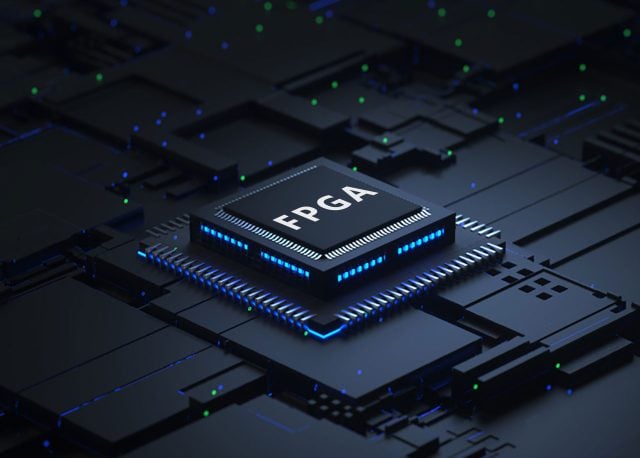
In FPGAs, connections and cables can be rearranged programmatically. Any logic gate can be emulated and connected together in any combination as desired. FPGAs are mostly SRAM based, so theoretically you can reprogram them millions of times.
It’s not without its limitations, but modern FPGAs are much more efficient. You can currently run a 100MHz RISC-V core (soft-core) in a $10 FPGA chip. People are running Linux on it.
Where Are FPGAs Used?
FPGAs can be used for all kinds of applications. This includes consumer electronics such as smartphones, autonomous vehicles, cameras, displays, video/image processing and security systems. It is also used for many commercial uses, such as in servers and a variety of vertical markets, including aerospace, defense, medical electronics, and distributed monetary systems. It is dying.
Brief History of FPGA
The beginnings of the FPGA date back to the 1980s, when inventors Ross Freeman and Bernard Vonderschmitt founded Xilinx, which would become a pioneering company in the FPGA industry. Their groundbreaking innovations have allowed electronic designers to implement digital circuits without requiring special manufacturing. FPGA technologies have seen significant advancements since then, with major players such as Altera (now part of Intel) contributing.
Let’s make a reminder at this point. AMD, which you know well, purchased Xilinx for a large price. The red team, which had access to Xilinx’s technologies, began to use the company’s capabilities in different areas.
What is ASIC?
In fact, the nomenclature says it all: application-specific integrated circuit. ASICs are special semiconductor circuits designed to perform a specific function or set of functions. Unlike general-purpose processors such as CPUs and GPUs, ASICs are tailored to meet the needs of a specific application. Since it is aimed at a specific job, it is specially optimized, so performance and power efficiency can be achieved. In general, high-volume products where the cost of custom design can be justified by the advantages of improved performance, lower power consumption and reduced form factor. Nowadays, circuits called ASIC are used.
Specially designed chips can have any logical, memory or analog components necessary to perform the desired function. However, manufacturing an ASIC is expensive and time-consuming. Also, like an FPGA, it cannot be reprogrammed or modified after production. It is much better suited for high-volume, low-volatility and stable applications such as digital signal processing, graphics processing or encryption.
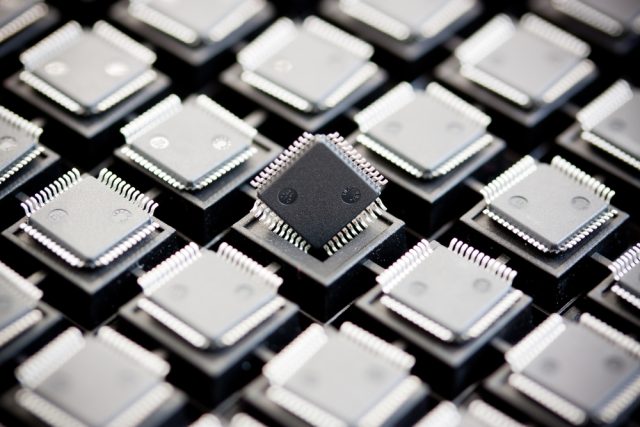
An ASIC is manufactured through a process called photolithography, in which a specific arrangement of transistors and other components is etched onto a silicon wafer. This scheme is used to implement the desired functionality of the ASIC, which can range from simple logic gates to complex digital signal processing circuits. We said that the manufacturing process for ASICs is time-consuming and expensive; There are multiple steps such as mask creation, wafer production and packaging. However, after the initial investment is made, the cost per unit of ASICs can decrease significantly as production volume increases. So, if high quantities are produced, it makes sense to produce application-specific integrated circuits.
Where Are ASICs Used?
ASICs can be used in a variety of industries, each leveraging the technology for unique purposes. Here are some key industries where ASICs play an important role. :
- Consumer Electronics: ASICs are ubiquitous in consumer electronics, powering devices like smartphones, digital cameras and smart TVs. Their ability to provide custom solutions increases the overall performance and power efficiency of these devices.
- Telecommunications: Specially designed structures that can be located in network equipment, routers and communication devices provide optimum functionality and speed in data processing.
- Automotive Industry: They contribute significantly to the automotive industry, where they are integrated into various systems such as engine control units (ECU), advanced driver assistance systems (ADAS) and infotainment systems.
- Health Services: Medical devices, diagnostic equipment and imaging systems; It often uses ASICs to meet stringent requirements such as precision, reliability and power efficiency.
FPGA vs ASIC
In the table below you can see the differences between ASICs and FPGAs:
|
ASIC |
FPGA |
|
|
Design Flexibility |
Once produced, it cannot be changed again; Changes require new design and manufacturing |
High programmability; Can be modified after production, suitable for rapid prototyping and adaptable designs |
|
Performance |
Higher performance thanks to special design; is optimized for a specific application |
Slightly lower performance due to reconfigurable architecture; additional performance overhead due to programmability |
|
Power Consumption |
Usually lower due to optimized design |
Often higher than ASICs, especially large designs |
|
Delivery Time to Market |
Longer due to design, verification, manufacturing and testing stages; The changes extend the period even further. |
Shorter; does not require long manufacturing; Design changes can be quickly implemented by reprogramming |
|
Cost |
Lower cost per unit for high volume production; higher Non-recurring Engineering (NRE) costs |
Higher unit cost for low volume production; lower NRE costs |
|
Applications |
Ideal for high volume, fixed function applications with high performance and power efficiency requirements |
Suitable for rapid prototyping, changing requirements, low volume production or limited budget projects |
|
Integration with SoCs |
Some modern SoCs may have ASIC-based microprocessors |
Some modern SoCs may include FPGA elements for flexibility |
|
Long Life and Reliability |
Generally longer lifespan due to reduced sensitivity to environmental factors such as radiation |
Lifespan may be shortened in certain applications due to sensitivity to factors such as radiation and high temperatures |
|
Development tools |
Special design and verification tools required, which can be expensive |
Broad ecosystem of tools available from both FPGA vendors and third-party suppliers; more user-friendly development environments |
|
Private IP Protection |
Stronger protection because the design is wired and cannot be easily reverse engineered |
Vulnerable to potential IP theft or cloning, especially if security by design measures are not rigorously implemented |
|
Reusability |
Cannot be reused; The design is determined after it is produced |
Reusable; same FPGA can be reprogrammed for multiple applications or iterations |
What is SoC?
Providing a solution on a single chip to integrate multiple electronic systems onto a single chip, SoC is an important driver of modern electronics. When we say system-on-chip, we are actually talking about the chip as a single piece, in other words the processor. However, within this integrated circuit are the processor (CPU), graphics processing unit (integrated GPU), microcontroller, peripheral controllers (USB for storage), memory, input/output (I/O). ) ports, special neural network circuitry, and radio modems (for Bluetooth or Wi-Fi).
In other words, all of these are kept in a single layer with the process we call SoC. Having all these components on a single substrate allows SoCs to use less power and take up less space than their multi-chip counterparts. It is becoming increasingly popular with the growth of the Internet of Things (IoT) and mobile computing.
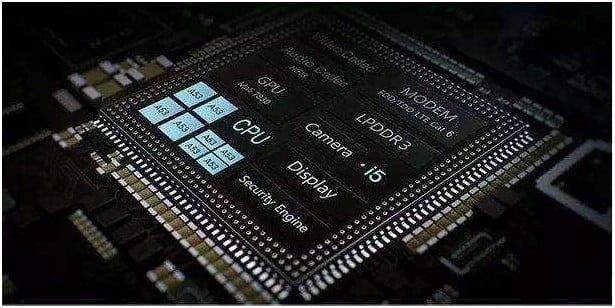
The processor is the “brain” of the chip, responsible for executing instructions and performing calculations. Memory stores data and instructions for the processor to access. Input/output interfaces allow the chip to communicate with other components or devices, such as sensors, displays, or other chips. As you know, graphics are responsible for image output. Modems manage Wi-Fi and Bluetooth connections. Imagine that all these functions are performed in a small monolithic chip.
To summarize, SoC refers to a type of microchip that integrates all the necessary components of the computer or other electronic system on a single chip. Its usage area is quite common. These systems, which bring everything together, find a place in many devices such as smartphones, tablets, IoT devices, consoles such as Nintendo Switch, PlayStation and Xbox, Raspberry Pi computers, Arduino cards and STEM kits. In addition, the number of laptops with SoC type processors is increasing day by day.

